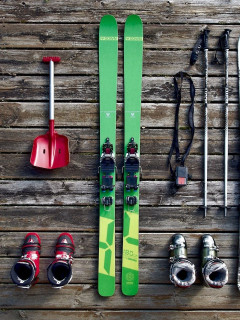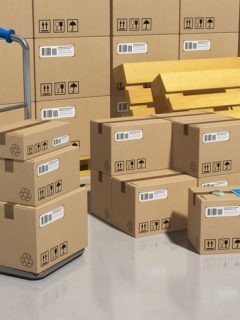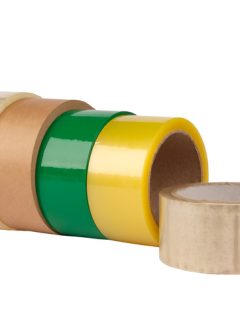Warehouses have an important function in logistical processes. Their smooth and trouble-free functioning is only possible in the presence of appropriate equipment (furniture and warehouse trolleys, transport equipment and others). Maintaining order in the warehouse and taking development measures (e.g. updating equipment, improving staff qualifications) improve the profitability of this area of the company. How to equip the warehouse? What should every employee or warehouse manager bear in mind?
Equipping the work stations in the warehouse
In a well-equipped warehouse, workstations are carefully planned. Packing tables, work tables, packaging machines and various accessories (e.g. film sleeves for sealing machines) must appear. Without these elements, the warehouse cannot be described as complete. The work of warehousemen and sorters involves picking and packing. In the following article, you will find out what the most important elements of warehouse equipment are.
Warehouse furniture – or what exactly?
Warehouse furniture can come in different types and sizes – it all depends on the size and height of the warehouse, as well as the type of materials stored in it. The most common types of warehouse furniture include pallet racking, cantilever and drive-in racks, and mezzanine floors. Pallet racks are the most common, enabling goods packed on pallets to be inserted and removed conveniently. They are usually adapted to the capacity of forklift trucks – in terms of height and depth.
Most warehouse furniture is made of metal – not coincidentally. This material is durable, very strong and resistant to stress and mechanical damage. Despite the exceptional qualities of metal, it is advisable to additionally protect such storage furniture with bumpers.
Warehouse transport trolleys – characteristics
Transport trolleys are a must in the warehouse. They should be selected directly for the storage of goods in the loading bay. They are used to transport parcels, packages and bulky items. The most common types of warehouse trol leys are: simple two-wheel trolleys, pallet trolleys and lift trucks. Their choice also depends on the height of the warehouse racks and the size of the entire warehouse (the more professional the hall, the more types of trolleys).
In addition, other warehouse trolleys can be found at RAJA, such as: folding arm trolleys, table trolleys, two-wheel trolleys, furniture trolleys, system box trolleys, folding transport trolleys, stacking trolleys, scissor platform trolleys, scissor pallet trucks, mesh board trolleys.
Wooden pallets and palletising accessories – essentials for every warehouse
Environmentally friendly, durable wooden and plastic pallets are useful for storing, transporting and shipping goods. At RAJA, you can find types such as plywood pallets, pressed wood pallets, plastic pallets, cardboard pallets and mini pallets.
Equally important are accessories for palletisation, such as cardboard angles and corners, safety cones, cardboard and plastic dividers.
How to equip a warehouse? Warehouse accessories
The most popular storage accessories are ladders and platforms, small containers for storing small items and storage scales. The former make it possible to carry out work at heights, which is particularly important in high-rise warehouses with all-round space management. In addition, packaging equipment(stretch film wra ppers and PP and PE film strapping machines) must not be missing from the loading bay. The first accessory allows for the quick protection of goods stored on pallets (simply wrapping them in durable, robust stretch film). Strap wrappers, on the other hand, are responsible for securing loads during transport from the warehouse.
It is also worth mentioning containers, storage bins and pallet extensions – natural complements to warehouse furniture. These are another of the answers to the question “how to equip a warehouse?”.
Warehouse accessories essential for packaging
Warehouse accessories can have different purposes. Those associated with RAJA are all accessories necessary for packaging – they fit into what are known as shipping warehouses. These are places where parcels are not only stored, but also prepared for shipping. They have more extensive facilities than other similar halls. They are usually combined with an office area.
Every shipping warehouse needs items such as labels and stickers, cardboard boxes, parcel fillers, adhesive tapes and foils, cardboard boxes and office supplies. All of these products can be found in the RAJA online shop, which focuses on high quality and ecology.
Features of adhesive packaging tapes
There are several versions of tapes, including adhesive, polypropylene, splicing and composite tapes. The most popular of these – adhesive tapes – can range from packaging tapes to tapes for special tasks. Their most important task is to seal the parcel tightly.
Resistant, flexible and strong composite tapes are used for pallet packaging. They withstand heavy loads. Polypropylene tapes are made from high-quality PP plastic. Their strength depends on their width and thickness. Strapping tapes are used to strap pallets together, firmly attach goods to the pallet and reinforce the carton.
The process of wrapping shipments with tape is called banding. Its purpose is to secure consecutive layers of goods firmly. It also stabilises high loads. In addition to strapping, metal (or plastic) fasteners and strapping tensioners are used in the banding process.
Labels and stickers – information, identification
Labelsand stickers are an essential source of information flow in the warehouse. They can inform about a certain prohibition (e.g. “No smoking”) and also identify consignments and objects.
Labelsare designed to mark racks and shelves – so that workers do not wander among countless racks looking for a particular accessory or parcel. Storage racks are usually marked with letters of the alphabet, numbers, sometimes symbols.
The stickers make it easier to identify the items that are on the shelves. It would be good if an appropriate barcode were printed on each one.
Materials needed for proper shipment preparation
Warehouse equipment also includes basic products used in daily work (packaging, securing parcels). Correctly packaged parcels include items such as a cardboard box, envelope or plastic bag, as well as various parcel fillers. The cardboard box must be neither too large nor too small. The empty spaces between the item being transported and the walls of the cardboard box must be filled to the brim – this will protect the contents of the parcel from mechanical damage.
Not only warehouse equipment. Order in the warehouse – why is it so important?
No warehouseman, warehouse manager or entrepreneur in charge of a warehouse should forget to keep the storage area tidy. At least one person should be present on each shift to ensure that every employee’s workstations are clean.
There are also other rules on how to keep the warehouse tidy. Professional machines, equipment and tools for closing and packing goods into parcels should be taken care of. Good work organisation is important (each employee should set aside something of a few minutes to clean his or her station at the end of a shift), as well as regular inventories. Encourage warehousemen to take care of cleanliness – it is worth implementing a bonus system for a clean station. Let them also learn how to store empty cartons in the warehouse. Cleaning of workstations should be done with professional cleaners.
Keeping the warehouse tidy is one of the guidelines on how to improve warehouse profitability. The development of the company is also influenced by more or less costly measures such as: investment in modern equipment, division of the warehouse area into work zones, continuous development of the employees’ qualifications.














